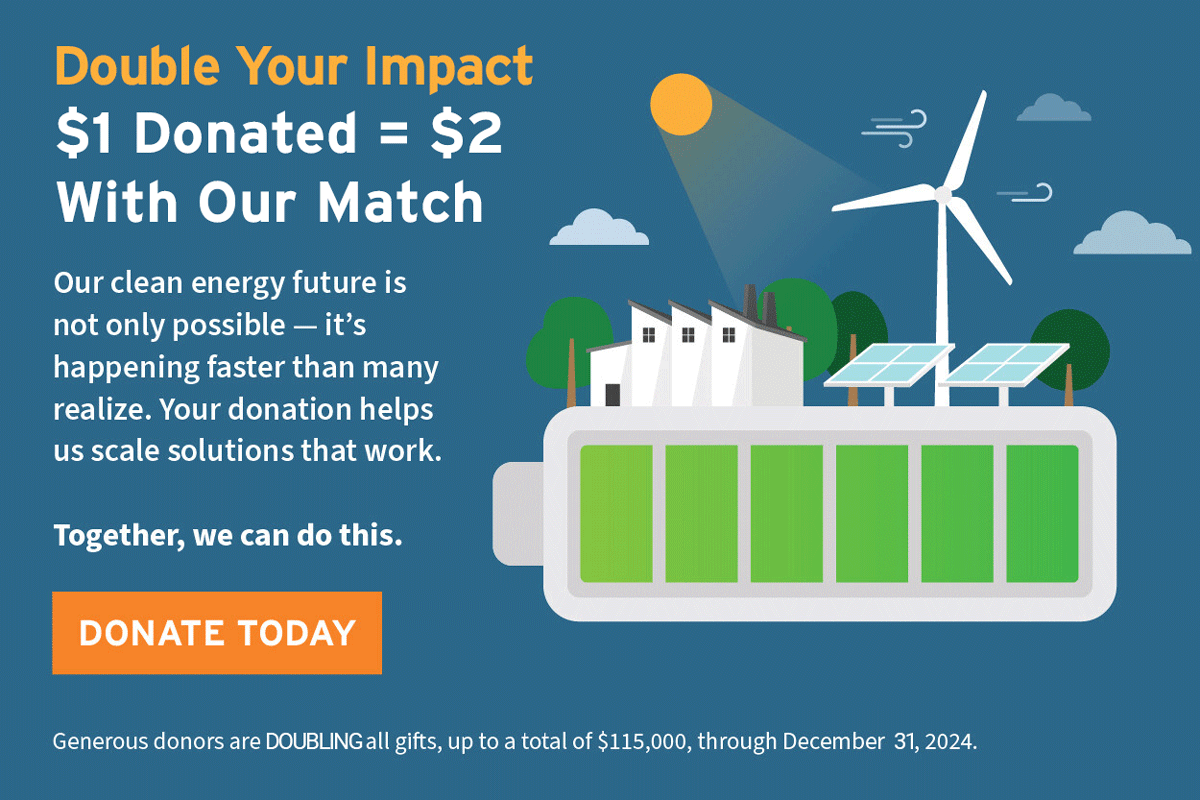All lights out,Blackout of New York skyline

A Resilience Strategy Based on Energy Efficiency Delivers Five Core Values
Resilience is perhaps the hottest energy-related topic discussed today among private-sector and government leaders worldwide. Extreme weather events, physical and cybersecurity threats, and utility grid failures are among the myriad reasons leaders are looking for more resilient and reliable energy solutions. However, most resilience efforts today are missing the mark. The current solution set pulls from a very small toolkit, consisting of adding diesel generators, combined heat and power systems, and other simple fossil-fuel based systems. This is driven by short payback horizons of decision makers and rapid decision timelines that prevent sufficient analysis.
Rocky Mountain Institute believes that energy efficiency is a critical, yet often overlooked, component of a resilient energy system. Deep energy efficiency as the first part of a resilience strategy will provide significant long-term value and increased reliability by:
- Decreasing backup generation needs and up-front capital costs
- Reducing dependence on outside fuel sources
- Decreasing life-cycle costs and increasing value
- Generating revenue and supporting the grid of the future
- Meeting parallel objectives
Resilient Systems Today
At its core, resilience is the ability of buildings, campuses (including military bases), or district systems to sustain or quickly recover from disasters, such as weather-related events, cyberattacks, or major utility grid interruptions. The resulting implications of resilience, however, vary from entity to entity, so it is difficult to apply one common framework of what resilience is, or the optimal way to achieve it. Additionally, it can be difficult to put a price on the ability to keep critical systems up and running. Many leaders would pay “whatever it takes” to keep operations running, particularly where safety and security are involved.
At the individual-building scale, resiliency can be achieved by installing backup generation on-site. In the United States, internal combustion engines are commonly used for backup generation. There are an estimated 250 gigawatts of backup generator power in the United States, with diesel generator sets making up 70 to 80 percent of that power. However, diesel generators can be unreliable—they are often not maintained properly, and fossil fuel spoils if it’s not replaced every six to 12 months. Technologies like solar-plus-storage and microgrids can provide reliable emergency power, and they are gaining market share as they improve and as the public focuses on resilience.
The standards and technologies used for backup power vary from entity to entity. Military installations rely mainly on diesel generators to supply backup power in buildings with loads critical to mission assurance. These generators are often significantly oversized—designed to meet twice the peak load of a building. Most commercial buildings, meanwhile, are required to have sufficient backup power to allow occupants to safely leave a building during power loss. More critical facilities, such as hospitals and police stations, must have longer-lasting backup power supplies due to their critical nature. More energy-intensive data centers typically use both batteries and diesel generators for emergency power to ensure continuous, uninterrupted power. However, companies like Microsoft are hoping to move away from this model and are testing the use of fuel cells for on-site power generation.
Energy Efficiency: The Key to Driving Long-Term Value and Reliability
Energy efficiency is an often underrated strategy that can support resilience efforts by delivering five core values:
- Decreasing backup generation needs and up-front capital costs. An investment in energy efficiency will, first and foremost, decrease the amount of backup power required to keep a building or load operational. A 50 percent improvement in building energy efficiency will decrease the size of that building’s backup power system by half. Halving the system size will decrease the cost of traditional diesel generator sets and solar-plus-storage solutions alike. The benefits continue to trickle downstream, as lower energy loads reduce the size, cost, and complexity of electrical infrastructure and other supporting technologies, and reduce ongoing energy costs.
- Reducing dependence on outside fuel sources. If on-site generation sources require delivery of a fuel—which is the case for diesel generator sets, fuel cells, natural gas turbines, and other fossil-fuel technologies—then higher-efficiency equipment will require less of it. Two benefits of this include (1) a need for less fuel to perform the same operations during a short outage (saving fuel costs), and (2) less-frequent refueling during a long outage. Essentially, efficiency allows facilities to run longer on less fuel.
This benefit provides greater energy security to the nation’s military by reducing exposure to attack (i.e., diesel storage tanks or refueling routes become less of a critical target). When efficiency is paired with solar power and energy storage, the need for refueling trips and the associated risks are eliminated by confining the energy supply and storage to a closed and relatively autonomous system. - Decreasing life-cycle costs and increasing value. Energy efficient systems have lower life-cycle costs than inefficient systems. Efficient systems may cost more up-front than typical systems, but this cost is paid back over time through lower utility bills. For instance, high-efficiency and right-sized HVAC units will save money over the operating life of the equipment. In the US commercial building sector alone, implementing energy projects that improve energy efficiency, increase building flexibility, and/or build on-site generation and storage is a $290 billion net-present-value opportunity.
- Generating revenue and supporting the grid of the future. Efficiency measures can provide grid services like demand response, peak shaving, and frequency and voltage regulation, as well as load flexibility. Engaging with local utilities and providing grid services such as these can generate additional utility-related revenues, further improving the net present value of the efficiency investment while supporting a forward-facing grid.
- Meeting parallel objectives. Finally, efficiency meets a number of parallel objectives that are not directly related to resilience. Energy efficiency reduces operational costs through lower energy bills and lower operations and maintenance costs. Reducing energy consumption can help organizations meet objectives that are parallel to resiliency goals, including energy, budgetary, carbon, or sustainability goals.
Looking Ahead
Before leaping to solutions that involve using the big hammer that is an expensive and carbon-intensive diesel generator to provide resilience, look to reduce the size of the nail you’re trying to hit. Pause for a moment and think strategically about how efficiency can give you more value with lower long-term costs.
RMI is undertaking several resilience-based research efforts to drive solutions that deliver reliability, energy security, long-term value, and a cleaner grid. These include:
- An insight brief on energy efficiency–based resilience, building on the concepts noted here. Please reach out if you are interested in learning more or getting involved.
- A meta-analysis of large-scale threats, market-winning technologies, and how much the public understands about grid threats, to be published in 2019.
Ongoing work in Caribbean island nations to evolve the fragile, unstable power system from what it is today to one that relies on a more distributed, regional, hurricane-resistant approach. You can read about our work on building a resilient, renewable future in the Caribbean here, and our work specifically on Puerto Rico here.
Image courtesy of iStock.
